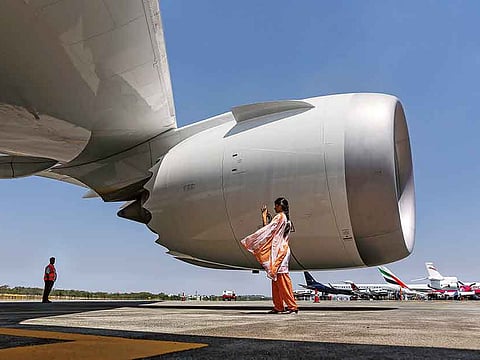Indian aviation hits turbulent skies
Creaking infrastructure continues to hamper potential in the world's fastest-growing aviation market despite landmark moves to ease regulations

India’s air sector, the fastest growing aviation industry globally, continues to face substantial hurdles despite recent moves by the government to liberalise the sector and generate investment, according to analysts.
Last June the government of Prime Minister Narendra Modi unveiled a new national civil aviation policy — a regulation that had been 13 years in the making. The decision to ease the rules permitting domestic carriers to fly abroad was hailed by officials as a “turning point” in the sector and likely to boost foreign investment.
The new policy follows the introduction of the Make in India campaign, launched in 2014, designed to transform the country into a global design and manufacturing hub. Aviation is a key sector in the programme and the policy permits foreign investors to own 100 per cent of existing airports, as well as offering various financial incentives and tax breaks.
However, creaking infrastructure, high taxation and over-regulation remain considerable obstacles, according to industry experts.
“Thus far, the Modi government has done a lot of lip service and continued to extend the failed and mismanaged policies by previous administrations,” says Saj Ahmad, Chief Analyst at StrategicAero Research, an intelligence and analysis firm. “While token gesture changes were made to FDI, we have not exactly seen investors queuing up to dump money into the Indian aviation scene.
“If anything, the reverse has happened.”
Air travel in India expanded at a rate of more than 20 per cent in 2015, according to the most recent figures provided by the International Air Transport Association (IATA). This compares to growth of about 10 per cent in China and less than 5 per cent in the US.
India, which currently ranks as the ninth largest aviation market globally, is expected to knock the UK from its place in third position by 2026, with 278 million passengers, according to the IATA’s 20-year air passenger forecast. By 2035, this will rise to 442 million passengers.
“On the one hand it’s a growth market, with an expanding middle class with both the desire and capacity to travel,” says independent air transport consultant John Strickland. “However, on the other hand, many airports — especially the main ones — are suffering from creaking infrastructure and air traffic control delays.”
Airport congestion is increasingly becoming a serious issue in India as carriers struggle to maintain their on-time performance, a key selling point to low-cost customers. On average, an aircraft will circle for between 45 minutes and an hour before it can land in Mumbai during peak periods, compared with 25 minutes for Singapore and zero for Qatar, according to Martin Consulting figures reported by Bloomberg.
India’s airport infrastructure requires as much as $40 billion (Dh147 billion) in investment over the next 15 years, according to estimates by the CAPA Centre for Aviation in Sydney. However, the country is planning to invest only $5 billion over that period, states a June 2016 research paper by KPMG and the Associated Chambers of Commerce of India. This is “inadequate”, the paper adds.
Meanwhile, despite delays, passengers are benefitting from lower fares as carriers try to boost capacity. But this has resulted in falling yields — the primary means of measuring profitability — for airlines even as oil prices have fallen.
Yields in the first half of the 2016 fiscal year dropped by between 2.5 per cent and 11.6 per cent across India’s three listed airlines (Jet Airways, IndiGo, and SpiceJet), even as passenger traffic grew by 20.2 per cent and the average jet fuel price dropped by 1.3 per cent compared with average jet fuel prices in the 2016 fiscal year, according to ICRA, an independent information and investors’ services agency.
“With falling air fares thanks to competition, passengers indeed get a good deal,” says Ahmad. “However, airlines are making wafer-thin yield margins and in some cases, are operating on loss-making routes and struggling to make money even when cabins are full because pricing is so low.
“It’s a travesty and underscores precisely why Indian aviation is overhyped and lacks chronic investment.”
Sign up for the Daily Briefing
Get the latest news and updates straight to your inbox



